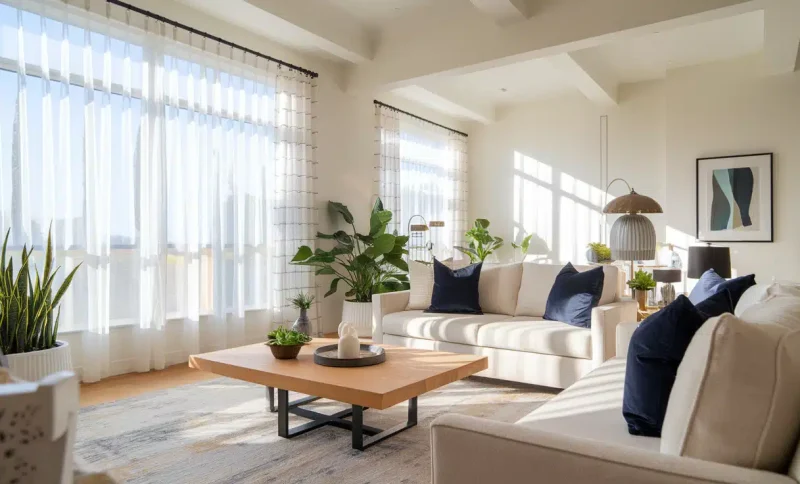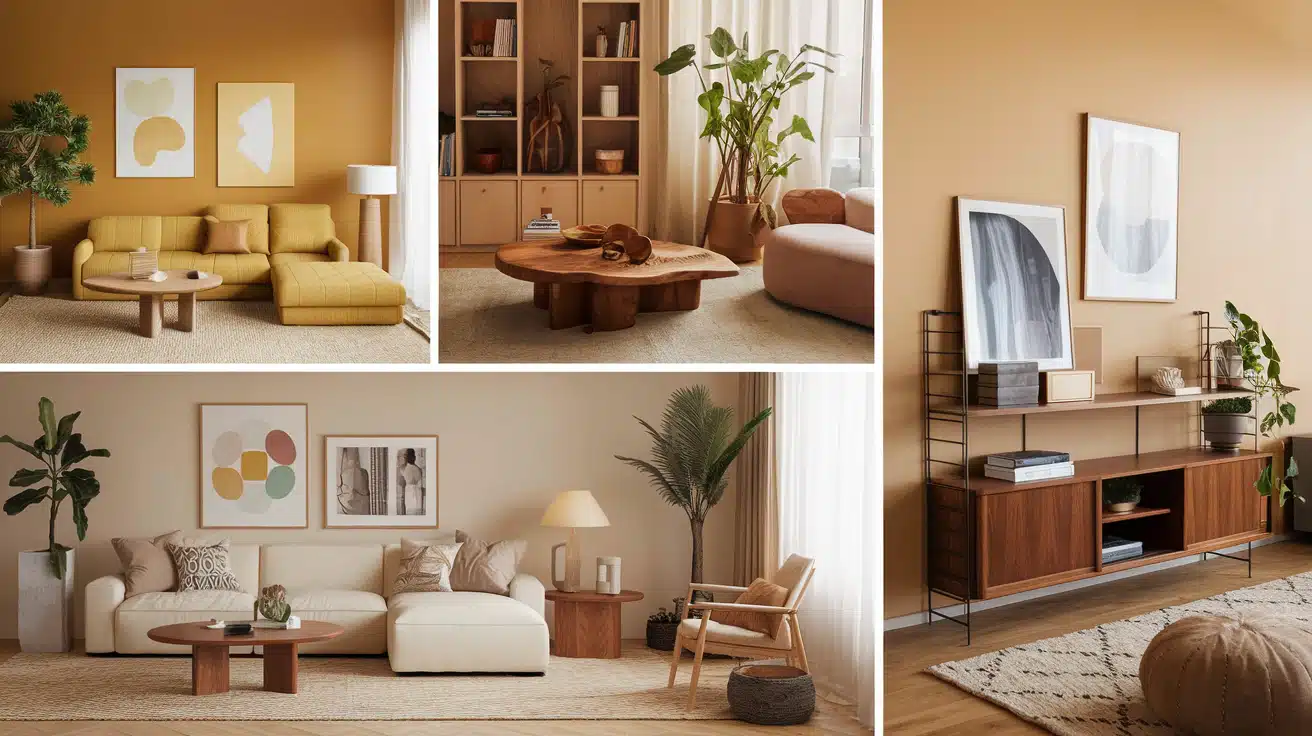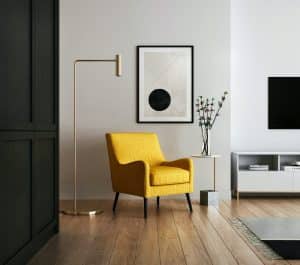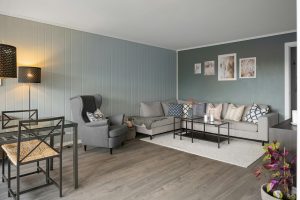Ever walked into a room and felt instantly at peace? Or stepped into a space that just felt “off” but you couldn’t figure out why? That’s the power of good design.
Your home should reflect who you are and make you feel comfortable every single day.
But designing a room from scratch can feel overwhelming. Where do you start? How do you choose colors? What furniture goes where?
Here’s the good news: you don’t need a design degree or a big budget to create a space you love.
In this blog, I’ll guide you through the step-by-step process of designing a room, utilizing proven methods that work for both beginners and experienced decorators. Let’s get started.
Learn the Basics of Interior Design
Before selecting paint colors or shopping for furniture, you need to understand what makes a room function effectively.
The 60-30-10 Color Rule
This is one of the simplest yet most effective design rules you can follow.
Think of your room in three color sections:
- 60% goes to your dominant color – This covers your walls, large furniture pieces, and flooring
- 30% is your secondary color – Think curtains, smaller furniture, rugs, or bedding
- 10% serves as your accent color – Throw pillows, artwork, decorative objects, or metallic touches
This formula creates visual balance without making the room feel boring or too busy.
Pro Tip: Keep your color undertones consistent. If you choose warm beige as your main color, pair it with warm grays or browns, rather than cool blues.
Core Design Principles That Matter
Good design isn’t random. It follows a few key principles:
- Space: Don’t fill every inch. Rooms need breathing room to feel calm and open.
- Light: Natural light, overhead fixtures, and lamps all play different roles. Layer them for the best effect.
- Texture: Mix smooth, rough, soft, and hard materials. Wood, metal, fabric, and glass together create depth.
- Pattern: One bold pattern works well when echoed subtly in other areas.
- Harmony: Every piece should feel like it belongs. That doesn’t mean everything matches; it means everything works together.
When these principles align, your room feels cohesive, even if you can’t quite explain why.
How to Design a Room Step-by-Step
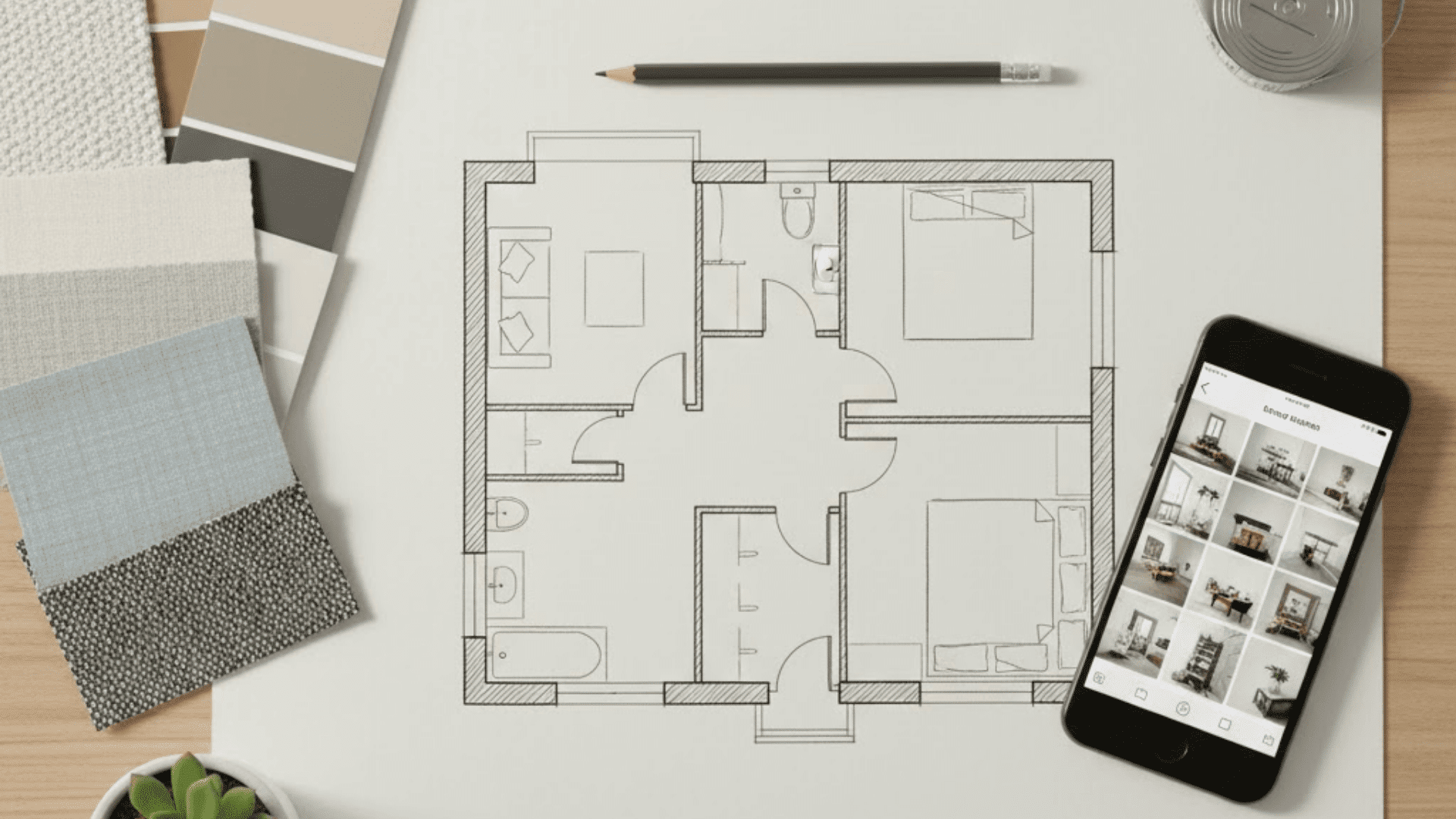
Now that you know the basics, let’s put them into action. Here’s how to design your room from start to finish.
Step 1: Define What the Room Should Do
Before you buy anything, ask yourself: what’s this room for? Is it a quiet bedroom where you want to rest? A lively living room for hosting friends? A home office where you need to focus?
The purpose shapes everything else. A bedroom needs soft lighting and calming colors. An office needs good task lighting and minimal distractions.
Step 2: Take Stock of Your Space
Walk around the room. Measure it. Notice where the windows are. See how sunlight moves through the space during the day.
Ask yourself:
- How big is the room?
- Where are the doors and windows?
- Are there awkward corners or built-in features?
- How do people move through the space?
Understanding your space helps you avoid buying furniture that’s too big or placing things in awkward spots.
Step 3: Build a Mood Board
This step is fun. Gather images that inspire you. Use Pinterest, Instagram, or even magazines. Save pictures of rooms, colors, furniture styles, and textures that catch your eye.
You’re not copying these rooms. You’re identifying patterns in what you like. Maybe you’re drawn to earthy tones. Or clean lines. Or cozy textures.
A mood board gives you clarity before you spend a single dollar.
Step 4: Pick Your Color Palette
Now apply the 60-30-10 rule. Select three colors that complement each other and suit the desired mood. Keep it simple at first.
| Room Type | 60% Main Color | 30% Secondary | 10% Accent |
|---|---|---|---|
| Living Room | Soft white | Natural wood | Black metal |
| Bedroom | Light beige | Gray | Navy blue |
| Home Office | Pale gray | Walnut brown | Sage green |
Tip: Test paint samples on your walls before making a commitment. Colors look different in different lighting.
Step 5: Plan Your Furniture Layout
Start with the biggest pieces first: the sofa, the bed, the desk, and the dining table. Place them where they make sense for how you’ll use the room. In a living room, arrange seating around a focal point, such as a fireplace or TV.
Ensure there’s sufficient space to walk comfortably. You should be able to move through the room without having to squeeze past furniture.
Float furniture away from walls when possible. It makes the room feel more open and intentional.
Step 6: Layer Your Lighting
One overhead light isn’t enough.
You need three types:
- Ambient lighting: The main source, like ceiling fixtures or recessed lights
- Task lighting: Focused light for reading, cooking, or working, think desk lamps or under-cabinet lights
- Accent lighting: Decorative touches like string lights, candles, or picture lights
Use warm white bulbs (2700K to 3000K) for a cozy feel. Add dimmers to adjust brightness according to the time of day.
Step 7: Add Personal Touches
This is where your room becomes yours. Add artwork that you love. Display books or collections that matter to you. Bring in plants for life and color.
Don’t overthink this part. Personal doesn’t mean perfect. It means real. Group small decor items in odd numbers: three candles, five picture frames, and one large plant. This creates visual interest without clutter.
Interior Design Tips That Make a Big Difference
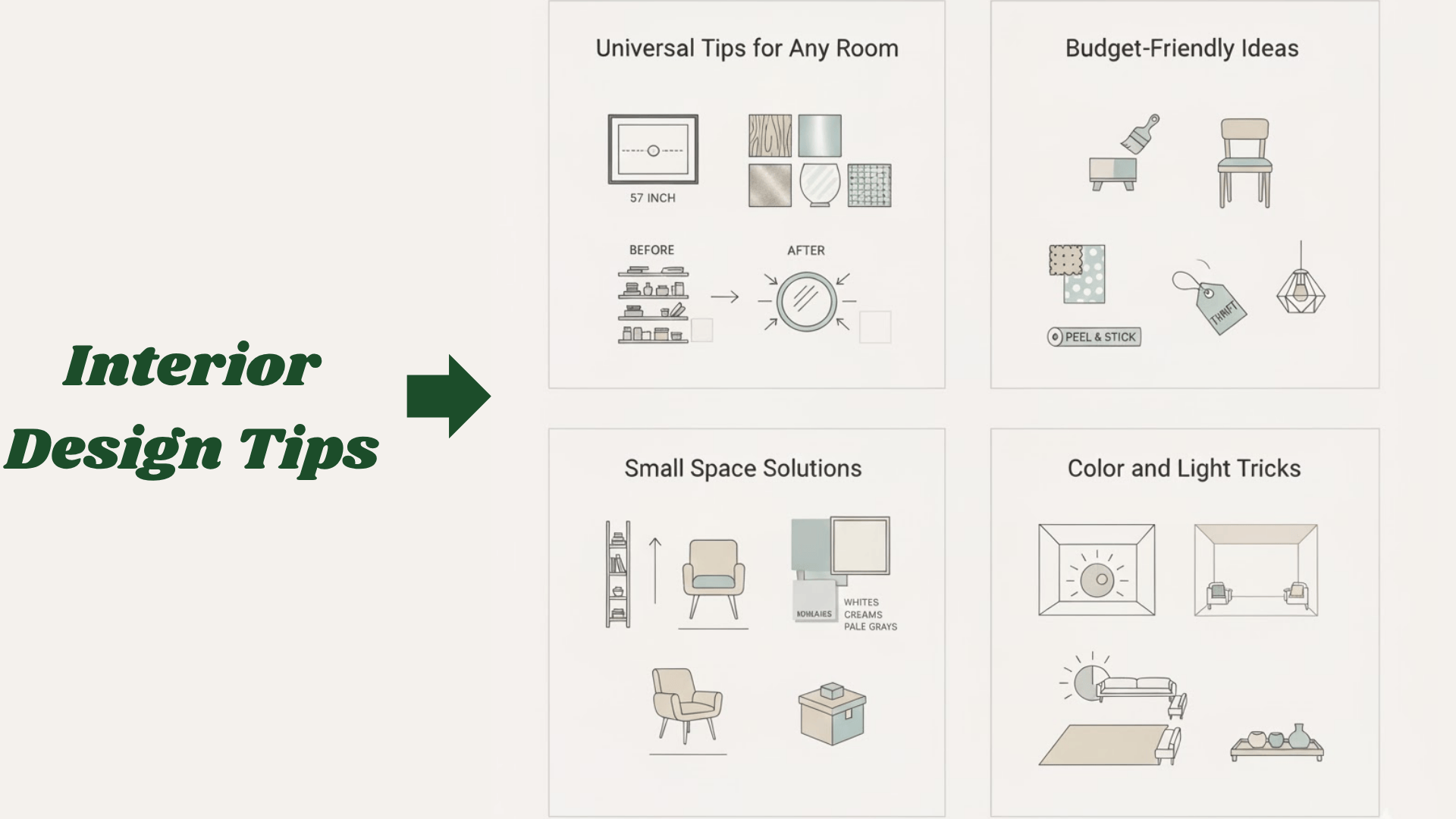
Small changes can create big results. Here are the design hacks that professionals use in every project.
Universal Tips for Any Room
- Hang art at eye level, around 57 inches from the floor – This creates the most natural viewing experience and makes your walls feel balanced.
- Mix materials by combining metal with wood, glass with fabric – Variety in textures keeps the room interesting and prevents it from feeling flat.
- Use mirrors across from windows to reflect light and make the room feel bigger – This simple trick doubles your natural light and creates depth.
- Edit your decor after styling, step back, and remove one item – Less clutter means more impact for the pieces that remain.
Small Space Solutions
- Go vertical with tall shelves or hanging plants – Using wall height draws the eye up and maximizes limited floor space.
- Choose furniture with visible legs to show more floor – Exposed flooring creates the illusion of more square footage.
- Stick to lighter colors on walls and furniture – Light shades reflect more light, making small spaces feel open and airy.
- Use multifunctional pieces like storage ottomans or fold-out desks – Furniture that serves double duty saves space without sacrificing function.
Budget-Friendly Tips
- Repaint or refinish old furniture instead of buying new – A fresh coat of paint can completely change a piece for just a few dollars.
- Frame fabric samples or printed art for wall decor – Affordable materials can look high-end when properly framed and displayed.
- Use peel-and-stick wallpaper for instant style – This renter-friendly option adds pattern and color without commitment or damage.
- Swap out light fixtures, a small change with a big impact – New lighting is one of the fastest ways to update a room’s entire look.
- Shop secondhand for unique finds – Thrift stores and online marketplaces offer quality pieces with character at a fraction of retail prices.
Color and Light Tricks
- Paint your ceiling one shade lighter than your walls to make the room appear taller – this subtle contrast creates the illusion of higher ceilings.
- Add dimmers to control mood and ambiance – Adjustable lighting lets you set the right atmosphere for any time of day or activity.
- Use rugs to define different areas in open spaces – Area rugs visually separate zones without walls or dividers.
- Group decor on trays to keep surfaces tidy – Corralling small items creates order and makes styling look intentional.
Design Mistakes and How to Fix Them
Let’s discuss what not to do. Avoiding these mistakes will save you time, money, and design regret.
| Mistake | Why It’s a Problem | The Fix |
|---|---|---|
| Buying furniture first | Creates clutter and mismatched styles | Measure and plan your layout before shopping |
| Using only overhead lighting | Makes the room feel flat and uninviting | Add table lamps, floor lamps, and accent lights |
| Matching everything perfectly | Looks boring and generic | Mix textures, finishes, and styles |
| Pushing all furniture against the walls | Wastes space and feels empty | Float key pieces toward the center |
| Skipping personal touches | The room feels like a showroom | Add art, books, plants, and meaningful objects |
Advanced Design Ideas for Creative Projects
Ready to push beyond the basics? These creative ideas will help you design spaces that feel truly unique.
1. Design by Mood
Create rooms based on how you want to feel. A bedroom might focus on calm and rest, while a home office needs energy and concentration.
Select colors and materials that evoke these emotions. Soft blues create serenity, warm yellows boost focus, and earth tones bring coziness.
2. Bring Nature Indoors
Add plants throughout your space, from small succulents to large statement greenery. Utilize natural materials, such as wood furniture, stone accents, and cotton or linen fabrics.
These organic elements reduce stress and make spaces feel more alive and peaceful.
3. Sustainable Choices
Repaint or refinish old furniture instead of buying new pieces. Shop secondhand for unique finds and choose natural materials over plastic.
One well-made piece beats five cheap ones, and sustainable choices add up over time.
4. Play with Mirrors and Light
Place mirrors across from windows to double natural light and expand your space. Add metallic accents, such as brass or copper, to catch and reflect light.
Install hidden LED strips under shelves or behind headboards for a subtle atmosphere without harsh overhead lighting.
5. Convert Unused Corners
Turn dead space into functional areas, a bright corner becomes a reading nook with just a chair and lamp.
Create a small coffee station, build a gallery wall, or add floating shelves for books and plants to create a cozy space. Even the smallest spaces have potential when viewed creatively.
Helpful Tools for DIY Interior Designers
Planning your room is easier with the right digital tools. Room planners like Roomstyler, Planner 5D, and Floorplanner let you test layouts before moving furniture.
Color tools like Coolors, Adobe Color, and Benjamin Moore Visualizer help you build palettes and preview paint colors on your walls virtually.
For inspiration, browse Pinterest, YouTube design channels, Apartment Therapy, and Architectural Digest.
These platforms showcase real rooms and practical solutions that you can adapt to your own space.
Together, these free resources help you visualize ideas and make confident decisions before spending money.
Closing Remarks
Designing a room isn’t about following trends or spending a fortune. It’s about creating a space that works for you and makes you feel good.
Start with the 60-30-10 color rule. Define your room’s purpose. Plan your layout. Layer your lighting. Then add the personal touches that make it yours.
You don’t have to do everything at once. Start small, rearrange a corner, add a plant, swap out your lighting. Each change builds on the last.
Remember, your home tells your story. Make it one you love to live in.
What room are you designing first? What’s the biggest challenge you’re facing? Drop your questions below, I’d love to help!








